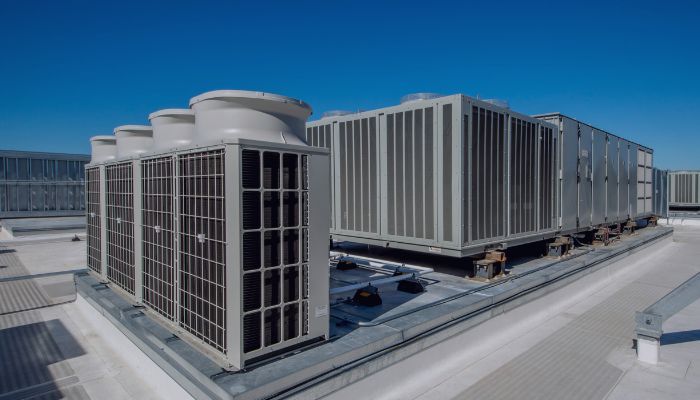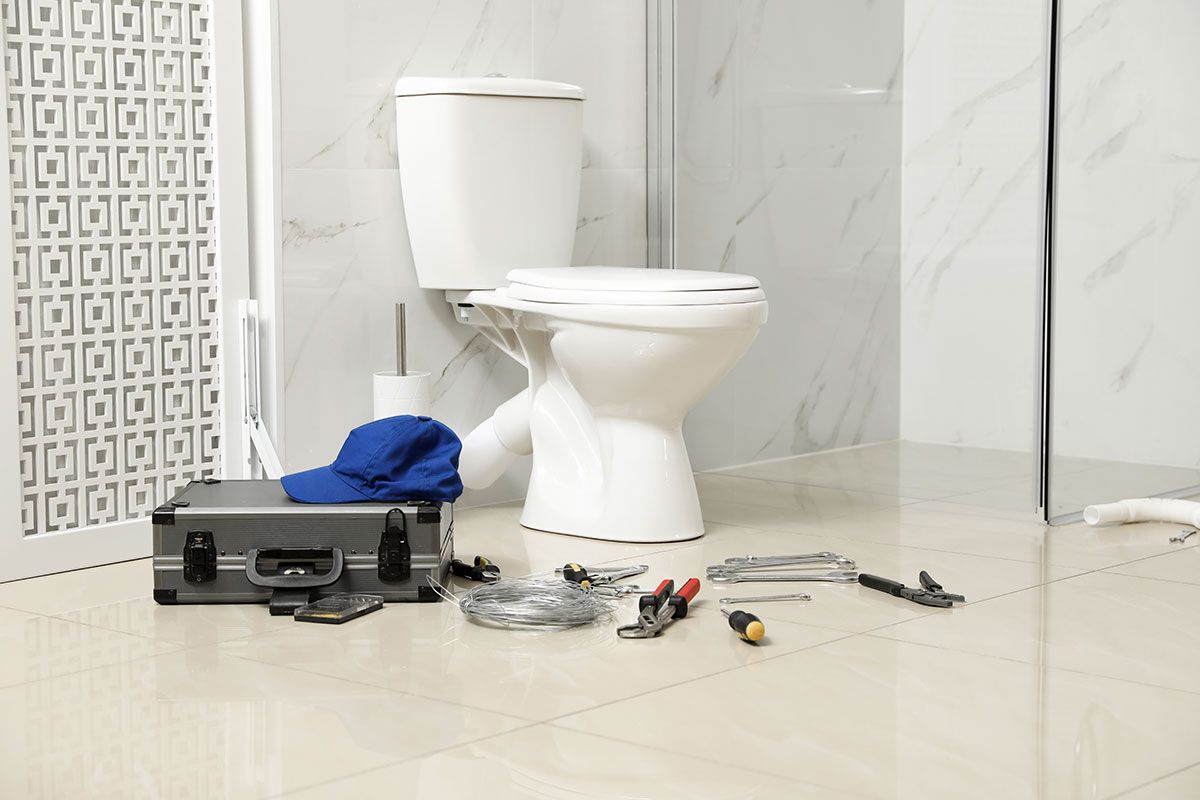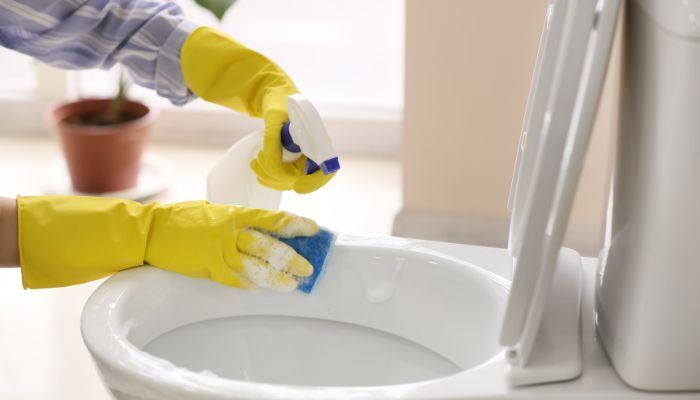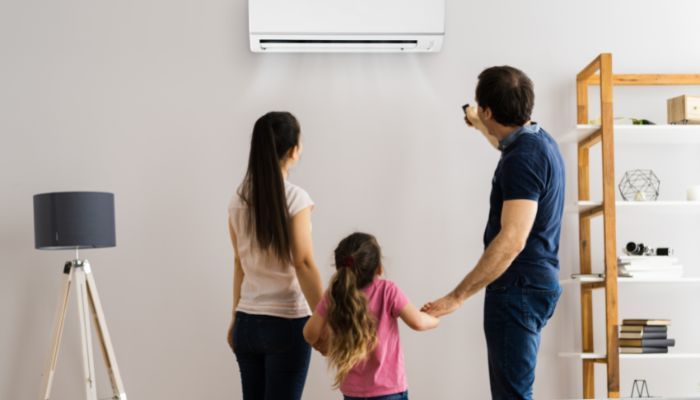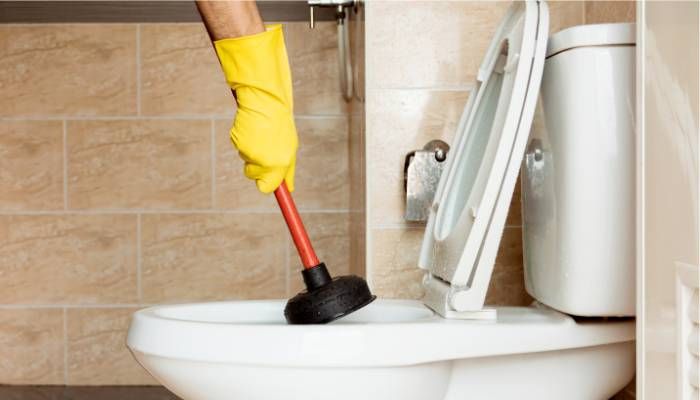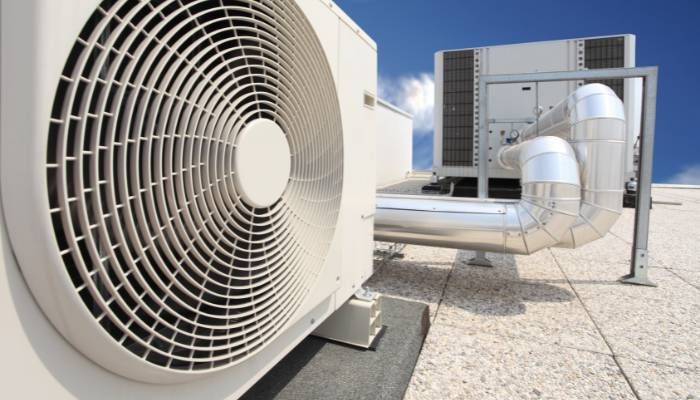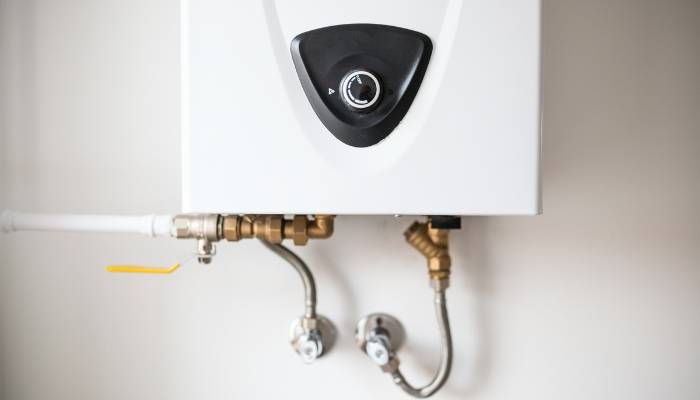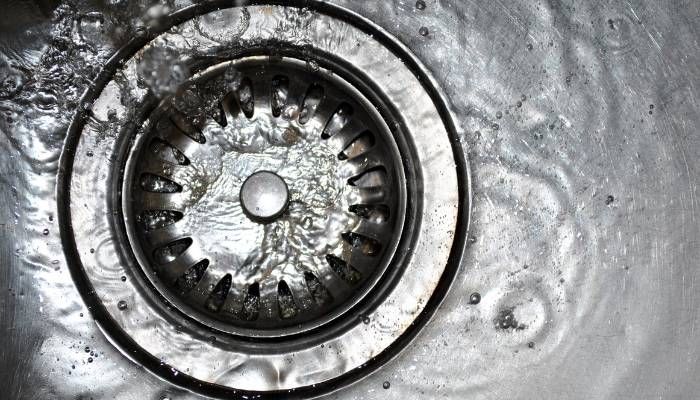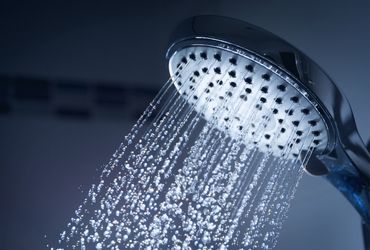Let’s break down the most common plumbing mistakes and how to avoid them! It’s like a game of whack-a-mole; you plug one hole and two more appear. Home plumbing can be an ever-evolving challenge, but with the right knowledge and help from Cummings Plumbing Heating & Cooling in Tucson, it doesn’t have to be a losing battle. Whether it’s a slow drip or flooding bathroom, avoiding common plumbing mistakes is key to keeping your house running smoothly.
The average homeowner may not know all the tricks for getting their plumbing in working order, and that’s ok! After all, that’s what Cummings Plumbing Heating & Cooling is here for. They have years of experience helping Tucson residents keep things flowing and are ready to show you how to avoid common plumbing missteps. From being careful about what goes down the drain to knowing when to call a professional – Cummings Plumbing Heating & Cooling has your back.
When it comes to keeping your home in top shape, there are few better investments than learning how to avoid plumbing mishaps. Knowing where potential problems lie can save you time and money down the line. Our article will take you through some of the most common plumbing mistakes and show you how Cummings Plumbing Heating & Cooling can help ensure you don’t make them yourself. So whether you’re looking for advice on preventing messes or need help fixing a clog, read on!
Understanding Common Plumbing Problems
Imagine a house with creaky pipes and leaky faucets. It’s like a well-loved, but aging car that needs just a bit more maintenance to keep running smoothly. This is the reality for many homeowners when it comes to common plumbing problems. With some know-how, though, these issues can be avoided with Cummings Plumbing Heating & Cooling in Tucson.
When it comes to plumbing problems, the key is learning about them before they become too serious. Most common plumbing issues are caused by poor installation or wear and tear from overuse. For example, a clogged drain might be caused by years of food scraps and grease buildup in your pipes; a leaky faucet could be due to an improperly installed washer; or an old water heater could need replacing before it breaks down completely.
By understanding these common issues, you can take steps to prevent them from happening or catch them early on and get help from Cummings Plumbing Heating & Cooling in Tucson before they become costly repairs. Regularly checking your fixtures, cleaning out drains, and scheduling maintenance checkups are all great preventative measures that can save you time and money in the long run.
You don’t have to be an expert plumber to stay on top of potential plumbing problems; with the right knowledge and professional help like Cummings Plumbing Heating & Cooling in Tucson when needed, you can avoid potential disasters down the line.
Preventative Maintenance Tips
It’s no secret that plumbing problems can be a major headache, but with proper preventative maintenance it doesn’t have to be a never-ending uphill battle. At Cummings Plumbing Heating & Cooling in Tucson, we provide regular maintenance tips to help our customers avoid common plumbing mistakes and keep their systems running smoothly.
First and foremost, it’s important to inspect your pipes regularly for signs of corrosion or damage. This can be done by looking for leaks around any visible pipe joints or fittings, as well as checking for discoloration or other signs of wear and tear. If you do find any potential issues, contact a professional plumber immediately to get them addressed before they become bigger issues down the road.
In addition to inspecting your pipes, it’s also important to check your plumbing fixtures on a regular basis. Make sure all faucets are tight and free from leaks, and that all drain lines are clear of debris or clogs. Finally, if you’re having trouble with your hot water heater or garbage disposal, make sure you call an experienced technician at Cummings Plumbing Heating & Cooling right away so they can diagnose the issue and get it fixed quickly and efficiently.
With these simple preventative maintenance tips in mind, you’ll be able to keep your plumbing system running like clockwork – no matter what curveballs life throws at you!
Clogged Drains
Clogged drains can be a major pain, and unfortunately they are one of the most common plumbing mistakes. Clogs can occur due to a variety of reasons, such as foreign objects being flushed down the drain or hair and other debris amassing in your pipes. To avoid this headache, preventative maintenance is key. Cummings Plumbing Heating & Cooling in Tucson can provide you with some simple steps to help keep your drains flowing freely.
First, use strainers on all of your drains to catch any debris that may be too large for the pipes. This will help stop clogs from forming before they become an issue. Second, it’s important to keep up with regular maintenance of your plumbing system by having a professional come out and inspect it once a year. This way, any potential issues can be caught early and taken care of before they become a problem. Finally, avoid putting anything down the drain that shouldn’t be there in the first place – this includes things like cooking grease, coffee grounds, or even paper towels.
The best way to avoid clogged drains is to take proactive steps now so you don’t have to worry about them later. By using strainers on all drains, keeping up with regular maintenance inspections, and avoiding putting anything down the drain that doesn’t belong there, you can help ensure your plumbing system stays running smoothly. Cummings Plumbing Heating & Cooling in Tucson is here to help you along every step of the way!
Leaky Faucets
One of the most common plumbing problems homeowners encounter is a dripping faucet. Not only is it a nuisance, but it can also be incredibly costly if left unchecked. With the help of Cummings Plumbing Heating & Cooling in Tucson, homeowners can avoid this frustrating problem and take charge of their own plumbing needs.
The cause of this issue is usually an aging or worn out washer at the base of the faucet handle, leading to a slow leak from your sink or shower. By replacing the washer with a new one, you can prevent water from dripping and save yourself some money on your water bill. Replacing a washer may sound like an intimidating task, but trust us–it’s much simpler than it seems!
Fortunately for Tucson homeowners, Cummings Plumbing Heating & Cooling offers easy solutions for any plumbing needs. Their experienced technicians will come to your home and replace any faulty parts, so you don’t have to worry about tackling this project yourself. They’ll also provide advice on how to best maintain your plumbing system so that you can avoid future plumbing issues. Taking advantage of their expertise will ensure that your home remains free from pesky leaks!
## Avoiding Diy Plumbing Repairs
When it comes to plumbing repairs, attempting a DIY approach can be a slippery slope. Taking on more than you can handle can leave your home in worse condition than when you began and put your safety at risk. To ensure that your plumbing repair is carried out effectively and efficiently, it’s best to consult an experienced plumber from Cummings Plumbing Heating & Cooling in Tucson.
The benefits of entrusting the job to a professional are numerous. A plumber will be able to diagnose and fix the problem quickly, saving you time and money in the long run. They will also have access to specialized tools and materials that aren’t available for do-it-yourselfers, as well as being knowledgeable about local building codes, avoiding potential fines or problems down the line.
Rather than attempt a risky repair yourself, rely on Cummings Plumbing Heating & Cooling for all your plumbing needs. With our team of highly trained technicians and their extensive experience in the industry we guarantee that any issue with your plumbing system gets taken care of swiftly and correctly – so you can get back to enjoying your home worry-free!
Benefits Of Professional Plumbing Services
Every homeowner knows how frustrating plumbing issues can be. From a leaking faucet to clogged drains, DIY repairs may seem like the easy solution. But when it comes to complex or long-term plumbing problems, hiring a professional is the smart option. Professional plumbing services from Cummings Plumbing Heating & Cooling in Tucson can provide numerous benefits and save you from bigger problems down the line.
Think of it this way: when faced with a difficult medical diagnosis, most people turn to specialists for treatments that are tailored to their specific needs. The same should apply when dealing with your home’s plumbing system. A qualified plumber will have the expertise and equipment necessary to accurately diagnose and repair your problem. They also have access to high-quality parts and materials that may not be available to homeowners.
In addition to getting the job done right, professional plumbers can help you avoid costly repairs in the future by identifying potential issues before they become more serious. For instance, having regular inspections of your home’s plumbing system can help detect small problems before they cause major damage. Furthermore, experienced plumbers can provide valuable advice on how best to maintain your system for optimal performance, saving you money in energy costs over time.
The bottom line is that professional plumbing services are essential for keeping your home’s plumbing running efficiently and avoiding costly repairs later on. With Cummings Plumbing Heating & Cooling in Tucson, you can rest assured that your problem will be handled quickly and efficiently by an experienced team of professionals who understand both the complexities of modern plumbing systems and the unique needs of their customers.
Understanding Your Home’s Plumbing System
Maintaining your home’s plumbing system can be a daunting task for many homeowners. From fixing the occasional leaky pipe to ensuring the entire system is functioning in top condition, understanding your plumbing is essential for avoiding costly repairs or replacements down the road. At Cummings Plumbing Heating & Cooling in Tucson, we offer professional services and reliable advice to help you keep your plumbing system running smoothly.
To understand how your home’s plumbing system works, it’s important to familiarize yourself with the different components of a typical setup. A water main supplies fresh water from the city while a drainage system carries wastewater away. In between these two components lies a network of pipes and fixtures, including faucets, toilets, showers, dishwashers, washing machines and more – all working together to ensure that you have access to clean water when you need it and waste is properly disposed of.
Knowing what each individual component does as well as how they interact with one another can help prevent issues such as clogs or leaks. It’s also beneficial to learn about common problems that may arise so you can identify them early on and take steps to rectify them before they become major concerns. Furthermore, having regular maintenance checks by an experienced technician can help detect any potential issues before they become serious.
By understanding your home’s plumbing system and taking proactive steps to maintain it regularly, you can avoid costly repairs or replacements in the long run. At Cummings Plumbing Heating & Cooling in Tucson, our team of certified technicians are dedicated to helping you keep your home’s plumbing up-to-date and running smoothly for years to come.
Signs You Need Professional Plumbing Assistance
When it comes to plumbing, it’s easy to feel like you’re walking a tightrope – one wrong move and the system could be in shambles. So, how do you know when it’s time to call in the pros? Well, there are a few tell-tale signs that can act as a canary in the coal mine for plumbing issues.
Like an iceberg, what you see on the surface is just the tip of what’s lurking beneath. Low water pressure, water spots on your ceiling or walls, and gurgling noises coming from your pipes are all indicators that something is amiss. If left unchecked, these seemingly minor issues can quickly become costly catastrophes.
Rather than risk aggravating an existing problem or creating a new one, entrusting experienced professionals with the job can help ensure that any plumbing-related task is handled safely and efficiently. Cummings Plumbing Heating & Cooling has certified technicians ready to jump into action at a moment’s notice. Don’t wait until it’s too late – contact them today for quality assistance!
Advantages Of Hiring Cummings Plumbing Heating & Cooling
Being a homeowner is no small feat. From regular maintenance to unexpected repairs, it can be overwhelming to keep up with all the responsibilities. When it comes to plumbing issues, consulting a professional can save you both time and money. Hiring Cummings Plumbing Heating & Cooling in Tucson offers the advantages of experience and expertise that are essential for avoiding common plumbing mistakes.
Think of your home’s plumbing like a game of chess. Making one wrong move could spell disaster for your entire house, but having an experienced partner at your side can make all the difference. With more than three decades in the business, Cummings Plumbing promises peace of mind that comes from knowing your plumbing system is in good hands. Their team is highly trained and certified, providing quality service backed by warranties on labor and parts.
Having access to a full range of services such as drain cleaning, water heater repair, leak detection, and sewer line replacement means that any issue you encounter can be addressed quickly and effectively by Cummings Plumbing technicians. Knowing that they are just a phone call away is invaluable when it comes to protecting your home from costly damage due to faulty plumbing work or neglected maintenance needs. So don’t let common plumbing mistakes become major problems; bring in an expert today!
Diagnosing Plumbing Issues
When it comes to plumbing, diagnosing the problem can be tricky. It takes skill, knowledge and experience to identify the source of an issue accurately. That’s why it’s important to hire a trusted professional like Cummings Plumbing Heating & Cooling in Tucson. Their team is equipped with all the necessary tools to quickly and efficiently diagnose your plumbing issues.
The experts at Cummings Plumbing can assess your plumbing system and troubleshoot potential problems before they become larger issues. They will provide you with an accurate diagnosis of the cause of any plumbing issue, along with suggestions for repair or replacement of faulty parts or equipment. With their help, you can get your system running smoothly again in no time.
Cummings Plumbing has the expertise and resources you need when it comes to diagnosing plumbing problems. Their experienced technicians are dedicated to providing quality customer service and helping customers find solutions that fit their budget and needs. Whether you require maintenance services or emergency repairs, their team is here to help!
Evaluating Plumbing Equipment
It’s easy to overlook the importance of evaluating plumbing equipment when tackling a plumbing issue. Like a mechanic diagnosing a car, it’s essential to assess the tools you’re using before diving into any repair or installation. Entering any job without properly examining the equipment can be detrimental, leading to costly mistakes and time-consuming reworks.
To illustrate this point, imagine a painter attempting to paint a mural on a blank wall. They’d need to evaluate the type of paint they have in their arsenal, as well as what brushes and other accessories they have at their disposal. The same holds true for plumbing: without inspecting your tools first, you could make an easily avoidable mistake that might set you back from resolving the problem at hand.
By assessing each item you plan to use before beginning your project, you can save yourself from unnecessary hassle and expense further down the road. Make sure your fittings are secure, pipes are free of rust or corrosion, and all necessary parts are present before starting your task. With Cummings Plumbing Heating & Cooling in Tucson, we provide our customers with reliable advice so that they can confidently approach any plumbing challenge with peace of mind knowing that their equipment is evaluated thoroughly.
Selecting The Right Plumbing Materials
When it comes to plumbing projects, selecting the right materials can be a crucial step. With Cummings Plumbing Heating & Cooling in Tucson, we understand that mistakes during this process can lead to costly repairs down the line. That’s why we want to help you avoid these issues by providing some tips on how to make sure you get the right materials for your project.
First, it’s important that you accurately assess the size of your project and determine what type of material is necessary for the job. If you’re dealing with an old or outdated system, it may require a different type of material than a brand new installation. Additionally, you should consider any environmental factors that could affect what kind of materials are best suited for your job.
Finally, once you’ve identified the necessary material and determined its size and quality requirements, it’s important that you check to make sure it meets any applicable building codes or regulations before purchasing it. This will ensure that your plumbing project is done properly and safely so that there won’t be any surprises down the line.
At Cummings Plumbing Heating & Cooling in Tucson, we understand how important selecting the right materials can be when it comes to successful plumbing projects. We hope these tips help ensure that your next job goes smoothly!
Replacing Or Repairing Plumbing Components
When it comes to plumbing, replacing or repairing components is an essential task. Yet, it can be tricky. It’s easy to make mistakes that could lead to costly repairs down the road. Fortunately, Cummings Plumbing Heating & Cooling in Tucson is here to help. With their expertise and experience, they can guide you every step of the way when it comes to replacing or repairing plumbing components.
One of the most common mistakes people make when replacing or repairing plumbing components is not considering the full scope of the job. This means not factoring in any additional work that may need to be done along with the replacement or repair process. To avoid this mistake, it’s important to consult a professional who knows exactly what needs to be done for a successful job. Cummings Plumbing Heating & Cooling will assess your situation and provide you with a detailed plan of action so that you know exactly what needs to be done and how much it will cost upfront.
Another common mistake people make is not using quality parts and materials for the job. The materials used will determine how long-lasting your replacement or repair job turns out to be. Cummings Plumbing Heating & Cooling only uses top-of-the-line materials because they understand that quality is key when it comes to plumbing work. They are committed to providing customers with reliable services so they can rest assured knowing their homes are safe and secure from potential plumbing issues down the line.
At Cummings Plumbing Heating & Cooling in Tucson, you can trust that your replacement or repair job will be completed properly and efficiently. Don’t let common mistakes stop you from getting your plumbing up and running – get in touch with them today for expert advice on all your plumbing needs!
Protecting Against Future Plumbing Problems
Protecting against future plumbing problems is an important part of keeping your home’s plumbing system running smoothly. By taking proactive steps, you can help to ensure that your pipes remain in good condition and don’t require costly repairs down the line. At Cummings Plumbing Heating & Cooling in Tucson, we can help you with some of these simple preventive measures.
First, it’s important to check for leaks regularly. You can check for drips in exposed piping or around faucet fixtures. If you do notice any leaks, it’s essential to get them professionally repaired right away so they don’t worsen over time. Additionally, if you have any aging or corroded pipes, they should be replaced as soon as possible as they are more likely to rupture or break down.
Finally, there are a few additional steps you can take to protect your plumbing system from future issues. Make sure all drains are clear of hair and debris and use strainers on shower and sink drains to prevent clogs from happening. Also, consider replacing your old water heater with a newer model that is more energy-efficient and reliable. With the help of Cummings Plumbing Heating & Cooling in Tucson, you can ensure that your plumbing system remains up-to-date and well-maintained for years to come.
Maintaining A Healthy Plumbing System
A healthy plumbing system is like a well-oiled machine, and it’s important to keep it that way. With regular maintenance and proper care, you can ensure that your plumbing system will be working smoothly for years to come. At Cummings Plumbing Heating & Cooling in Tucson, we understand the significance of keeping your plumbing system up and running, so let’s explore how to maintain a healthy plumbing system.
One of the most effective ways of maintaining a healthy plumbing system is by being proactive with preventative maintenance. This includes regularly checking for leaky faucets or pipes, inspecting water heaters, and ensuring all connections are sealed properly. Taking these simple steps can help prevent costly repairs down the line as well as reduce water waste. Additionally, using eco-friendly cleaning products is another great way to protect your pipes from corrosion or clogs caused by harsh chemicals.
It’s also important to be aware of any potential signs of trouble with your plumbing system such as slow draining pipes, strange noises coming from the pipes, or discoloration in the water. If you notice any of these issues it’s best to call a professional right away so they can assess the problem and provide an appropriate solution before it becomes bigger issue.
At Cummings Plumbing Heating & Cooling in Tucson we take pride in helping our clients maintain a healthy plumbing system through detailed inspections and prompt repairs when needed. We’re here to ensure that you’re able to enjoy all the benefits that come with having reliable plumbing!
Conclusion: Common Plumbing Mistakes And How To Avoid Them
It’s important to take the time to understand common plumbing problems and how to avoid them. By taking preventative measures and investing in quality materials, you can help ensure that your plumbing system remains healthy for years to come. However, when it comes to complex repairs or projects, it’s best to work with a professional like Cummings Plumbing Heating & Cooling in Tucson. They offer a wide range of services from basic fixes such as clogged drains and leaky faucets, to more advanced tasks like replacing components and protecting against future plumbing problems. With their knowledge and expertise, you can be sure that your plumbing system is in good hands. So don’t wait until it’s too late—take proactive steps today and enjoy the peace of mind that comes with healthy home plumbing!

